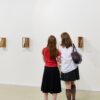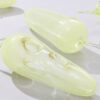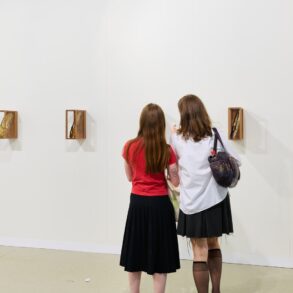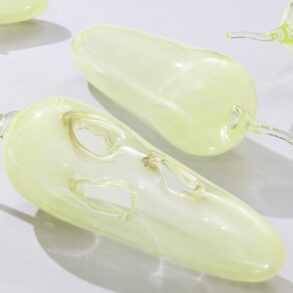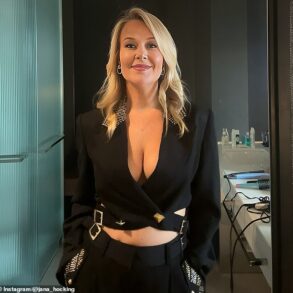Sometimes the most ordinary objects hold the richest meaning. Human hair – that most primal extension of our bodies, both revered and reviled – has long fascinated artists, and a new exhibition at Heide museum, Hair Pieces, brings together 38 artists from eight countries who feature hair as their medium and their central theme, exploring its peculiarity and power through sculpture, photography, conceptual and performance art. It’s weird. It’s even a little creepy. It’s also utterly engrossing.
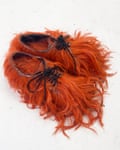
Curator Melissa Keys first had the idea for the show a decade ago – she had friends “who ran a commercial gallery that was located in an old hair studio” – and ideally would like to program more exhibitions involving hair.
“It’s a massive topic,” she says as we walk around the space. “So many artists work with this material, so there’s an opportunity for a number of shows. I wanted this one to be open and suggestive, rather than exhaustive.”
While Hair Pieces initially seems like an oddity, a kooky cabinet of curiosities, it quickly becomes clear that hair has a lot to say about human history, race and gender. Hairstyles, JD Okhai Ojeikere’s series of photographs depicting Nigerian women’s intricate and elaborate hair, captures the years of triumph after the country won its independence from the British empire. Grandly sculptural hairstyles are refracted through the history of colonialism and act as a potent symbol of reclamation and pride.
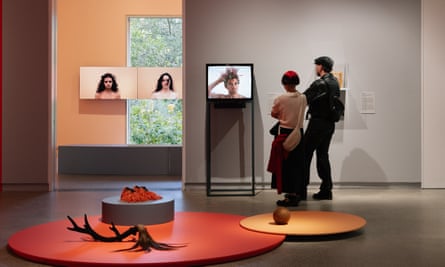



Johannesburg-based artist Kemang Wa Lehulere’s 2012 video installation Pencil Test 2 interrogates taxonomy and racial classification, in a video loop of the artist sliding pencils through his hair that seems lighthearted but for its context. In South Africa in 1950, authorities used “the pencil test” to enforce racial hierarchies – if a pencil inserted into a person’s hair fell out easily they were classified as white, but if it remained in place they would be categorised as either “black”, “Indian” or “coloured” and denied basic human rights.
Gender and feminism figure strongly in much of the artwork, perhaps inevitably with a material so contested and objectified. Wiradjuri artist Karla Dickens has crafted a collection of codpieces and aluminium underpants she titles Warrior Woman, one with a massive phallus of human hair protruding from the crotch. They brilliantly subvert gender expectations. Julie Rrap’s Horse’s Tale, from her 1999 series Porous Bodies, cleverly evokes Lee Miller. And Louise Weaver and Peter Ellis fold Kim Novak’s hairstyle from Hitchcock’s Vertigo into a potent sculptural installation titled Leonardo’s Dream. Given that film’s obsessive fetishisation of hair, a receptacle of male control and desire, it is highly charged.
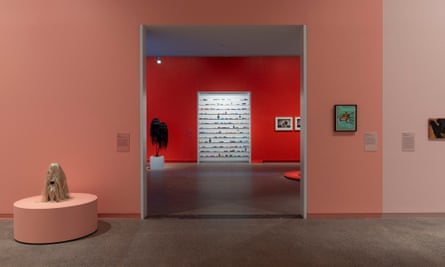



There is a fascinating tension in many works between hair as an expression of individuality and a kind of disembodied anonymity. Rosslynd Piggott’s Unknown Woman – From China to Brixton and Elsewhere is a brooch made of a strand of a woman’s hair bought by the artist in London’s Brixton Market. Jim Dine’s Braid is a detailed drawing of a plait cut from an unknown woman’s head. Charlie Sofo and Debris Facility have created a gorgeously coloured collection of found and discarded combs, some with strands of hair still stuck to them, in a macabre but poignant ode to self-care.
The surrealists, and the symbolists before them, understood and embraced the eerie, freakish quality of using human hair. Works by Man Ray and Dorothea Tanning depicted hair as uncontrollable and wilful, almost sentient. Hair Pieces taps into this surrealist vein, with many artists leaning deliberately into the uncanny: Hypnagogia, the show’s opening work by Melbourne artist Christina May Carey, is a series of screens and monitors showing hair braiding mixed with footage of rats’ tails, linked by black cables resembling strands of hair, as a large photograph of the artist’s eye looks over the scene. It draws from Carey’s own struggles with sleep paralysis, and clearly evokes André Breton’s “savage eye”, the disembodied pupil that haunts surrealists from Dalí to Magritte.
after newsletter promotion
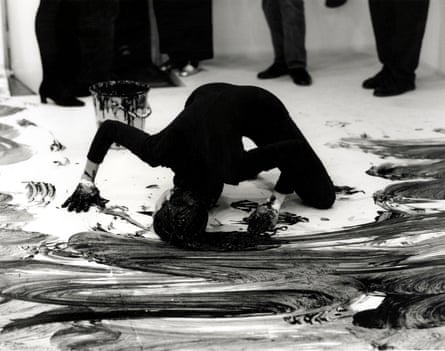



Perth-based artist Tarryn Gill’s Guardian depicts a small figure covered in thick layers of blond hair from which a set of teeth emerges, simultaneously endearing and repulsive. This piece has a kind of inverted twin in John Meade’s Self-portrait as Mary Magdalene; thick black hair covers a diminutive figure, its hands and feet moulded from the artist’s own in a material called Reducit, which shrinks as it dries. Both bring to mind Cousin It.
Hair Pieces wades into some dark territory: Wes Placek’s Hair of Murdered Women, one of a series of photographs taken in Auschwitz in 1975, and Edith Dekyndt’s Indigenous Shadow, depicting a flag of human hair solemnising the slave ships in Martinique, are particularly brutal.
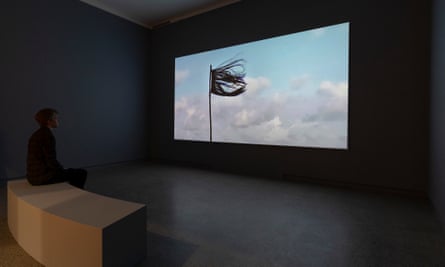



But it’s also playful. Taiwanese artist Shih Yung-Chun’s Braid Cabinet is a vintage dresser filled with detached animal and human heads, thick woollen hair cascading out the back as they stare unblinking out at the viewer. And Lou Hubbard’s hilarious absurdist art books obsessively cut and paste the coifs of disgraced Japanese prime minister Ryutaro Hashimoto and Monica Lewinsky.
There are also works by major artists such as Patricia Piccinini and Marina Abramović, but it’s the odd affiliations between works in Hair Pieces that feel most successful. It’s an exhibition that unravels and braids our most fundamental and unconscious memories of hair – its psychological, mythical and even spiritual dimensions. It’ll make you think twice before booking that next haircut.
-
Hair Pieces is open at the Heide Museum of Modern Art, Victoria until 6 October
This post was originally published on this site be sure to check out more of their content

